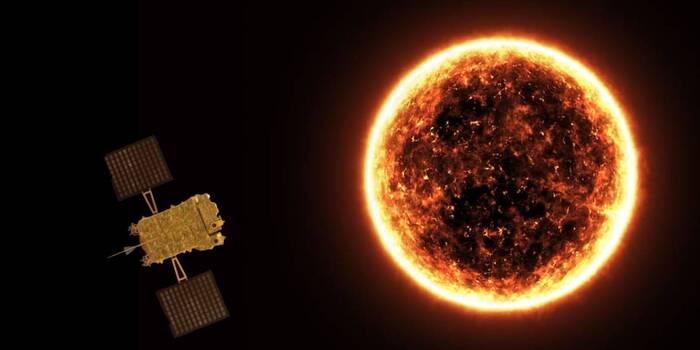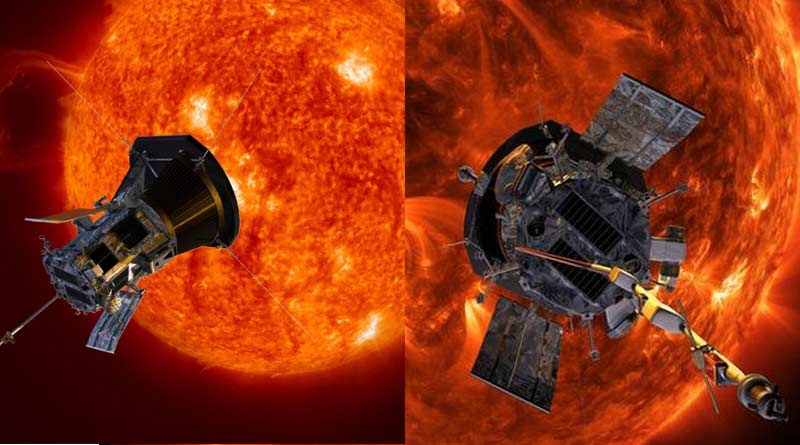This is how Aditya L1 will look in space
India’s first-ever mission to the Sun, known as Aditya-L1, is on track for a September launch, as confirmed by ISRO Chief S. Somanath. The spacecraft has safely arrived at Sriharikota and is fully prepared for liftoff during the first week of September. This mission is a significant step in India’s space exploration endeavors, aimed at studying the Sun and its behavior. Aditya-L1 will provide valuable insights into solar activities and help scientists better understand our star’s influence on space weather and communication systems on Earth. The mission’s imminent launch marks an exciting milestone in India’s space exploration journey.
ISRO posted on X, formerly Twitter “The launch of Aditya-L1, the first space-based Indian observatory to study the sun, is scheduled for September 2, 2023, at 11:50 Hrs. IST from Sriharikota. After the launch, it will take 125 days from the earth to reach Lagrange point 1 (L1). We have to wait till then”
The exact announcement date remains undecided, with a decision expected by Monday. The Aditya L1 mission aims to position the spacecraft in a strategically advantageous orbit for observing various phenomena on the Sun’s surface. It will be situated in a halo orbit around a specific point called Lagrange point (L1) within the Sun-Earth system, located approximately 1.5 million km away from Earth. As we await the final countdown for this ambitious space mission scheduled for September, it’s essential to familiarize ourselves with the orbit where ISRO plans to place Aditya L1, enabling detailed observations of the Sun.
All about the Lagrange point L1

The Lagrange point L1 is positioned approximately 1.5 million km away from Earth. Placing the satellite in a halo orbit around this L1 point allows for uninterrupted observation of the Sun, free from any interruptions like eclipses or occlusions. This continuous monitoring capability enables scientists to study solar activities and their immediate impact on space weather in real-time, providing valuable insights into the Sun’s behavior and its influence on our space environment.
L1 is one of five Lagrange points within the Earth-Sun system. It’s a unique spot where the gravitational forces from both Earth and the Sun precisely counteract the centrifugal force experienced by a smaller object. This delicate balance of forces essentially allows the object to remain in a stable position relative to the two larger celestial bodies. In simpler terms, it’s like a gravitational “sweet spot” where an object can effectively “hover” without being drawn closer to the Sun due to this equilibrium. This characteristic makes L1 an ideal location for missions like Aditya L1 to observe the Sun continuously.
Lagrange Point 1, or L1, is strategically positioned in the interplay of gravitational forces between Earth and the Sun. Located approximately 1.5 million kilometers from Earth, in the direction of the Sun, L1 rests along the line that connects these two celestial bodies. It essentially lies within Earth’s orbital path around the Sun. This specific location allows for a stable vantage point from which to observe the Sun without the interference of Earth’s atmosphere, making it an ideal spot for missions like Aditya L1 to study solar phenomena.
About Aditya L-1 payloads

The spacecraft is equipped with seven payloads designed for observing different layers of the Sun, including the photosphere, chromosphere, and the outermost layer known as the corona. These payloads utilize a range of instruments such as electromagnetic detectors, particle detectors, and magnetic field detectors to gather valuable data and insights into the Sun’s various layers and activities. This comprehensive suite of instruments allows Aditya L1 to conduct detailed observations and studies of the Sun’s behavior, contributing to our understanding of solar phenomena.
The unique vantage point at L1 allows four of the payloads to directly observe the Sun, while the other three payloads conduct in-situ studies of particles and fields at Lagrange point L1. The key information will primarily come from Aditya L1’s payloads. They are anticipated to offer insights crucial for comprehending important solar phenomena like coronal heating, coronal mass ejections, pre-flare and flare activities, as well as their characteristics. Additionally, they will help us understand the dynamics of space weather and the propagation of particles and fields in this environment, contributing significantly to our knowledge of the Sun and its effects on space.
Aditya L1 holds the promise of deepening our understanding of the Sun and its impact on our space environment. Like this post? Don’t forget to check out our other short stories in our Quick Read section

